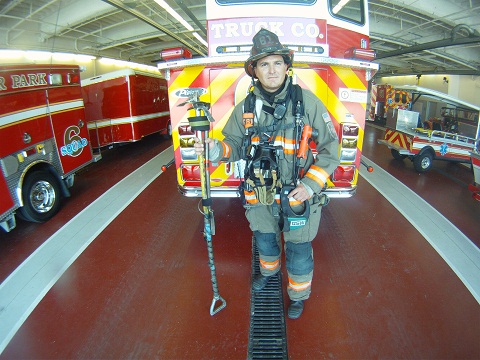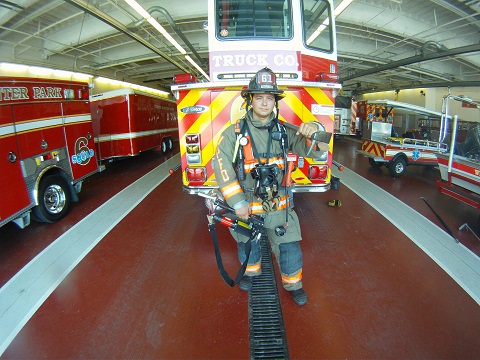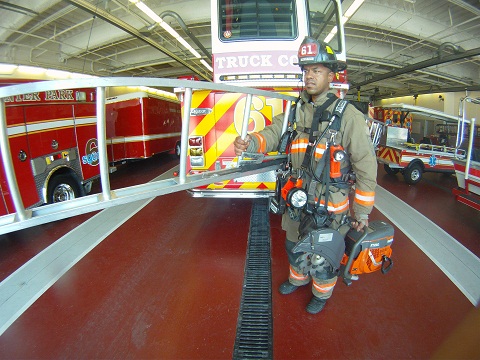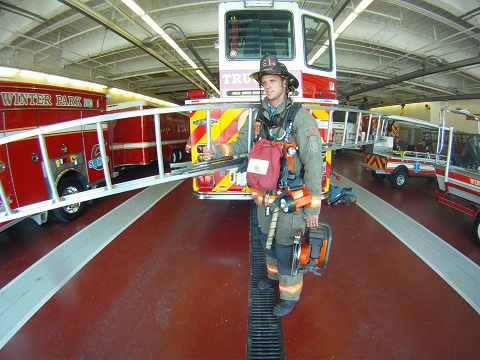In our last post we started talking about the benefits of riding assignments. We will now continue the discussion by highlighting some specific riding assignments of the truck company and discuss the team concept.
Before we get into the specifics, its important to layout the team concept. Truck functions have a very clear way of being “divided.†There are those that occur mostly inside the structure, and those that occur mostly outside. These functions are simply titled inside functions and outside functions. When using this thought process for riding assignments it can be stated as inside team and outside team. This is by no means is saying that the outside team never goes inside; it’s just a clear-cut way to distinguish or categorize their primary functions on the fireground.
Below is a sample way to layout and assign the basic truck company functions utilizing the team concept:
Inside Team Members
- Officer
- Right Jump
Inside Team Responsibilities
- Forcible entry
- Search
- Victims
- Fire
- Interior vent
- Opening up (Overhaul)
Inside Team Tool Assignments
- Officer
- Radio
- TIC
- Hook
- Light
- Right Jump
- Halligan
- 8 pound flathead axe/PIG
- Hook
- Can
Outside Team Members
- Driver
- Left Jump / Tillerman
Outside Team Responsibilities
- Ventilation
- Utilities
- Secondary egress
- Aerial ops
- VentEnterSearch
Outside Team Tool Assignments
- Driver
- Hook
- Halligan
- Cut sledge
- Ladder
- Left Jump/ Tillerman
- Hook
- Halligan
- Axe/sledge
- Ladder/saw
One thing worth mentioning is that a radio and light show up only under the officers tool assignments. EVERYONE ON THE FIREGROUND SHOULD HAVE A RADIO AND TWO LIGHTS…. The only reason why they are specifically mentioned under the officer is because they are some of his main tools of getting his particular functions accomplished.
The tool assignment portion of this should not be used to prevent people from carrying extra (personal) tools. In the above photos you will see different tools than what’s listed on the tool assignment. Tool assignments can vary depending on fire conditions and building type. For example, the last photo shows a Firefighter with a tool compliment commonly used when assigned to the rear of a commercial building. The specifics are just mentioned because there has to be some level of expectations of what capabilities everyone has tool-wise. Just be cautious not to carry too much. Often times people think they need to carry a bunch of additional tools. A well-trained truck crew can actually get more accomplished with a minimal set of tools since they will be able to operate quicker without being weighted down with unnecessary equipment. Some of the tool assignments may change depending on the type of structure and building construction, but we will get into that in more detail in the next post.
Obviously the assignments above are laid out for a four-person company. The assignments will have to be tweaked according to staffing. Each of the critical tasks listed still needs to be accomplished even if the truck company shows up with less than 4 people. The assignments can be shared with other units as needed, particularly when he department might not have a truck company or has a limited number of truck companies. In that case, these departments might assign some (or all) of the outside functions to an engine company or a two-person ambulance/medic crew (that are firefighters.) Or depending on response times, a department may choose to rely on that two-person medic crew to perform the inside functions allowing the limited staffed truck crew to focus only on outside.
Taking that limited crew scenario a bit further, if you have a limited staff truck crew that normally focuses on inside functions, and they announce on the radio that they are performing a VES, that should alert everyone else responding that the inside functions are not being handled at this time. This should trigger in everyone’s mind that “plan B†is in effect. Perhaps in this scenario, “plan B†might be to have the ambulance/medic crew now assume inside functions. So it goes without saying that the “plan B†should be thought out and trained on ahead of time as well.
The most important take-away about this is this: customize riding assignments for your specific needs (apparatus, staffing, equipment, building construction, response time, etc.) Break up the common fireground tasks in a logical easy to follow format and assign them to specific people (or seats) on each unit. Make sure that the expectations of assignment and tools are both reasonable and achievable. Riding assignments should not just be written down in some SOG just for the sake of saying that you have them. They need to be trained on, relied on, and utilized by everyone in order to be effective.
In our next post we will continue the discussion on riding assignments and even start breaking down the difference between primary and secondary priorities.





I would be curious to see a riding assignment for a volunteer department. I have been trying to come up with something!
Tom,
If you go to http://www.traditionstraining.com and click on the resources page then on the second page it has a operations manual for Kentland Volunteer Fire Dept. On the first couple pages of that manual it has detailed assignments for each position on the truck. It lists from 4 to 6 positions depending on how many guys are riding that day. Hope this helps.